Michael Sheridan (Ngāi Tahu), currently receives a Kā Pūtea Grant of $1500 over six years. He recently attended a conference in Burma as part of his PhD studies at James Cook University in Townsville, Queensland and below he gives an account of his travels.
“In 2014, I presented a component of my PhD research on food labelling and undeclared allergens at the Townsville Hospital Health Research Week. I was fortunate to win a prize of $2,000 for my James Cook University (JCU) research presentation, which was to be used for travel and conference attendance. I decided to attend the International Conference of Food and Environmental Science (ICFES) in Burma (Myanmar) in February.
I knew little of Myanmar before my trip, apart from the fact that it had been under military rule and had only recently opened to the west after 50 years of isolation. Further, that Aung San Suu Kyi had been under house arrest for many years and had won a Nobel Peace Prize for her continued struggle to introduce democracy to Myanmar.
I decided to extend my visit to include some self-funded exploration. I planned to travel from Yangon (Rangoon) to Mandalay, a one-hour boat ride north up the Ayeyarwady River to Mingun and return to Mandalay, with time in Bagan before travelling back to Yangon and out.
In Yangon, I visited the Royal Barge restaurant and the massive Shwedagon Pagoda, which is one of the holiest sites for Buddhists. It’s said to hold eight hairs of the Buddha and other relics. The pagoda is covered with hundreds of kilos of gold, over 4000 gold bells, 83,850 jewels. The vane and orb at the top are made up of more than 500 kilos of gold, encrusted with jewels including 4000 diamonds with a massive 1,800 carat diamond right at the top. I was inspired by the decadence that I went shopping early the next morning at Scott’s Market and bought some beautiful pieces of jade.
Before I left Yangon, I visited Aung San Suu Kyi’s house. All the taxi drivers I could converse with in English spoke favourably of Aung San Suu Kyi, saying that she will win the next election.
My next stop was the bustling city of Mandalay, where I walked the streets looking for an ATM. Navigating open sewers and the hordes of vehicles kept me on my toes. I eventually found an ATM and withdrew $200, which spat out $200,000 Kyat – a huge wad of cash that I quickly shoved into my bag.
The city itself is a one-hour drive from the airport and consists of a large, central, square royal palace compound, surrounded by a moat.
The next morning I caught a boat to Mingun, along the Ayeyarwady River. It was fantastic to climb the largest stupa in the world, the Mingun Paya (also the largest pile of bricks in the world) and to climb to the very top. The largest working bell in the world, the Mingun Bell – was right next door.
Back in Mandalay, I stopped at the Kuthodaw and Sanda Muni pagodas to see the world’s largest book, the Tripitaka, which was written back and front on slabs of marble, each housed in a little temple. The city has more than 10,000 temples, pagodas, and monasteries and electric motorcycle is definitely the way to get around.
As I wandered around the city, I met some poor children at a shack in the scrub. I gave them money and promptly returned to my hotel and bagged handfuls of hotel toiletries I had collected along the way – toothbrushes and paste, combs, shampoos etc and gave it to the mother who seemed very pleased.
The next day I had the opportunity to visit a monastic orphanage, where orphaned children are housed and educated to become monks. I also gave them a bag of hotel toiletries. Later, in Yangon, I watched a small boy no more than four-years-old, clutch a bunch of flowers, which he was selling in one hand, and a bottle of water in the other. He had to dodge freeway traffic in an effort to gain money for his family. I was concerned to see parents riding scooters in traffic too, while holding infants or toddlers in one arm and the motorcycle or rider with the other.
The many health and safety concerns I noted did not seem to be a high priority for most Burmese. Making money to buy the essentials took precedence, even at the risk of health and safety.
The panoramic highlight of my journey was to watch the hot air balloons rise from the sunrise mist above the temples of Bagan. I also paid a visit to the oldest pagoda in Bagan, the Bupaya (2nd Century), by the banks of the Ayeyarwady, where a group of monks posed for photos and the head monk came over and held my hand to have photos with me – throughout Myanmar, people often photographed me as some sort of curiosity.
This was a fantastic and eye-opening journey and I encourage any would-be Marco Polo’s to visit Myanmar and see it.” Nā Michael Sheridan.
Michael, works full-time as an environmental health officer at Townsville Public Health Unit. This is a public health regulatory and enforcement role, so he was keen to photograph public health issues during his travels through Myanmar. He is working part-time on his PhD thesis in the molecular immunology group at James Cook University.

2015 ICFES Conference.
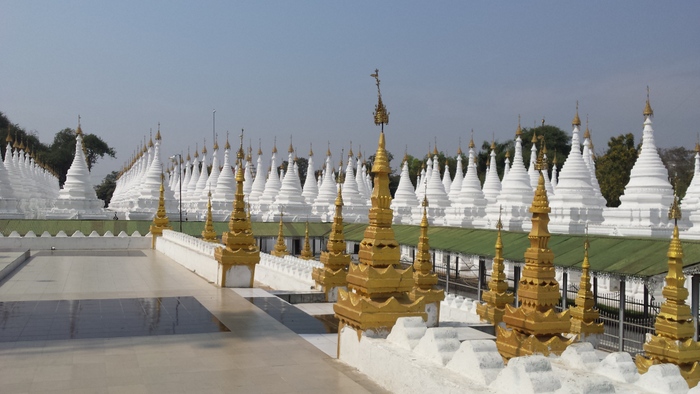
Sanda Muni Pagodas.
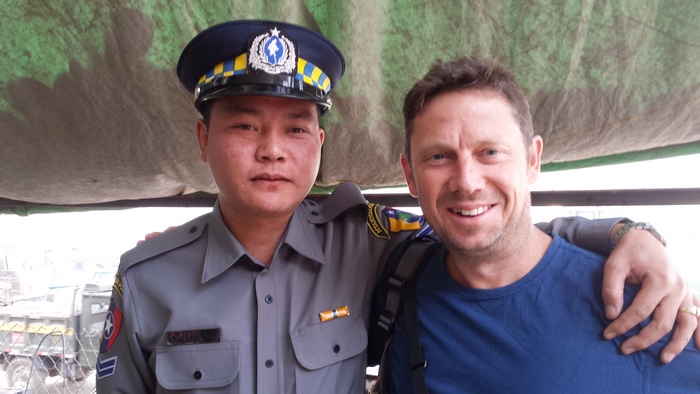
Michael with a local policeman.
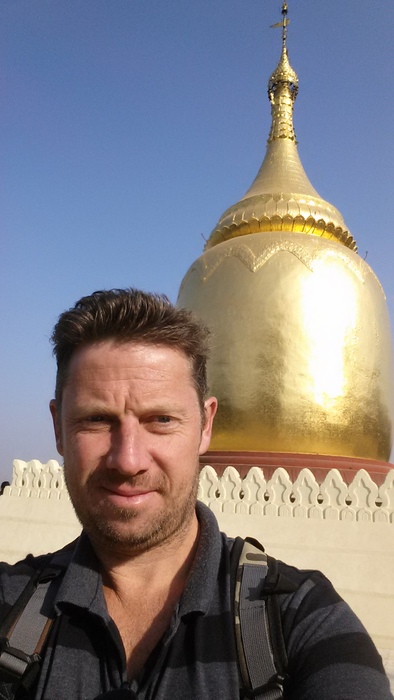
Michael in front of the Bupaya.
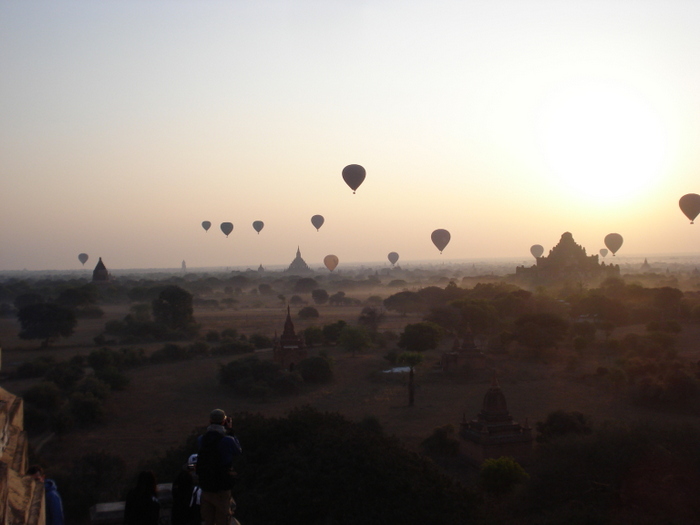
Hot air balloons over Bagan.
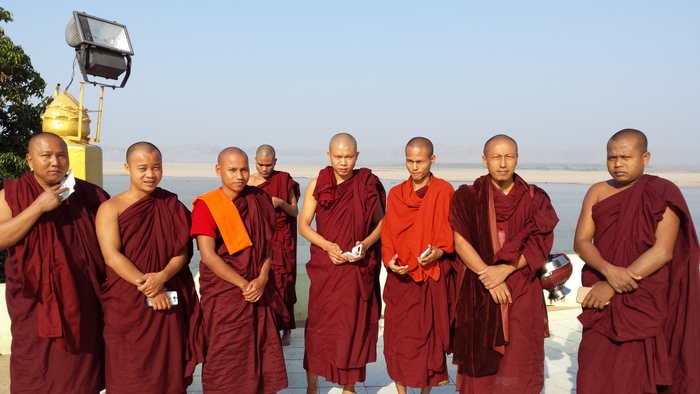
Bupaya and monks.